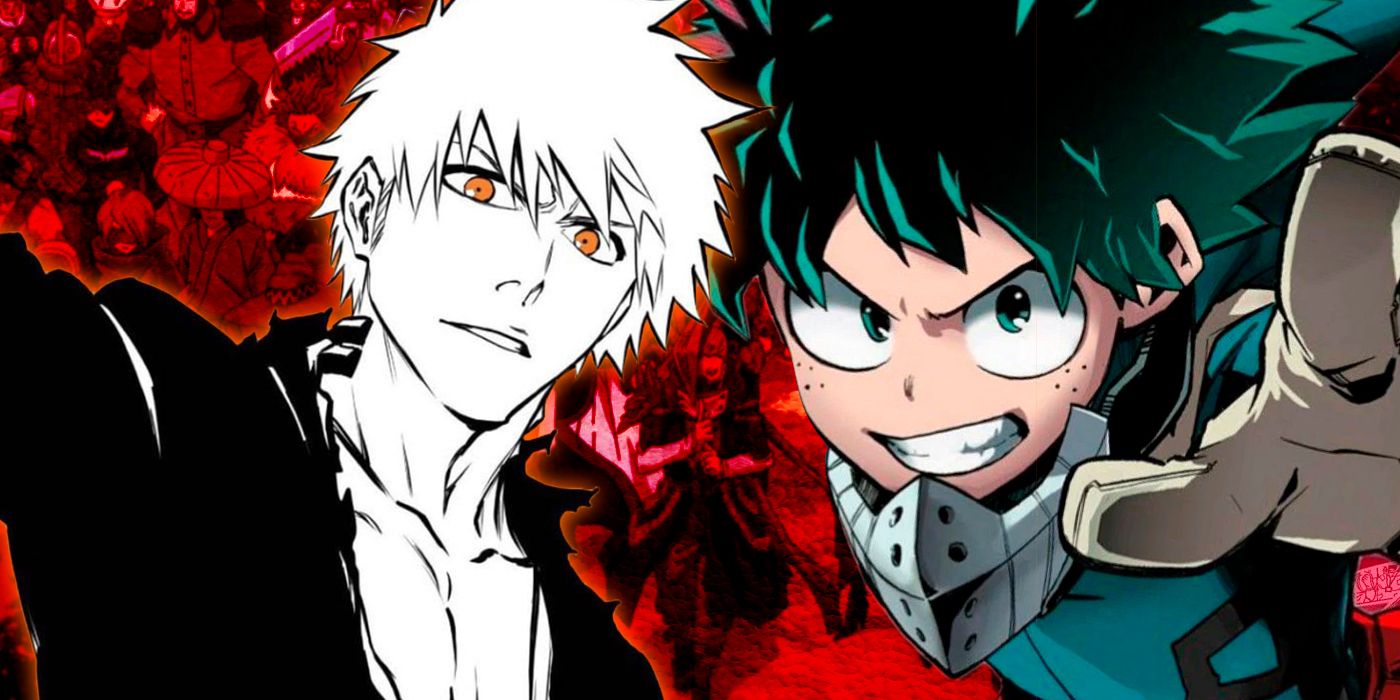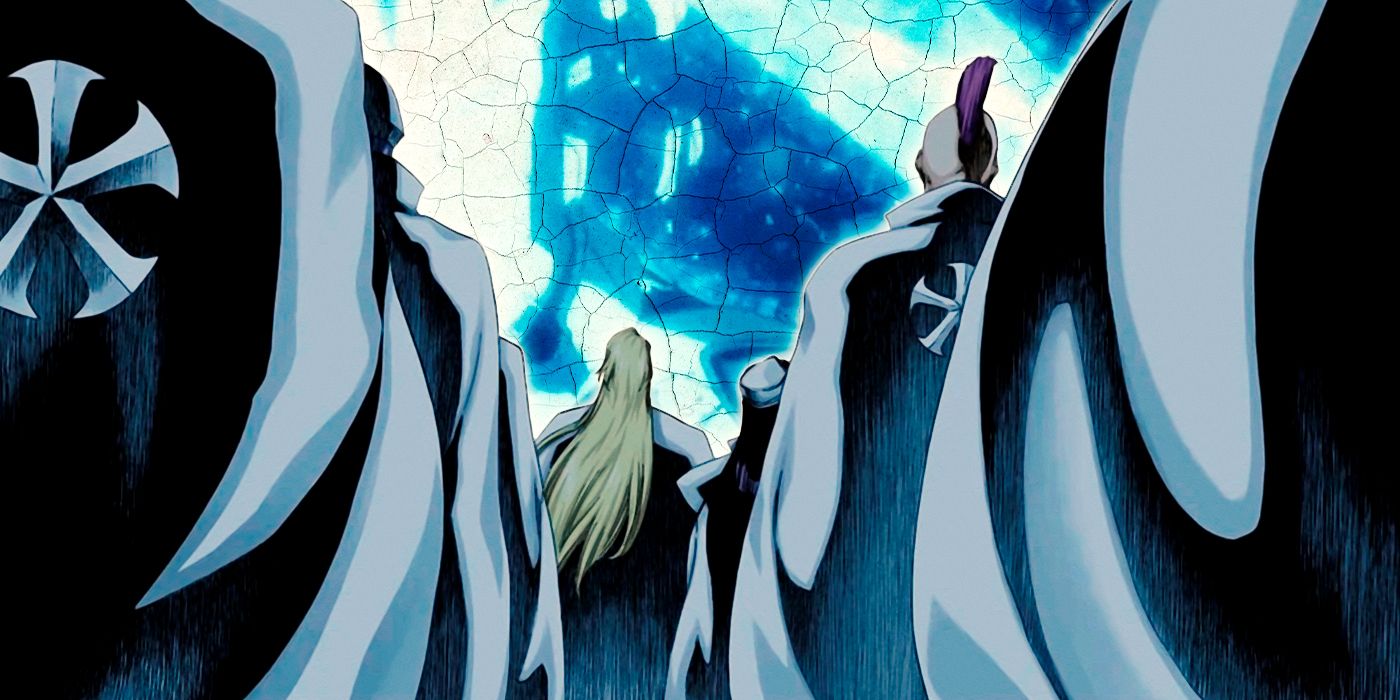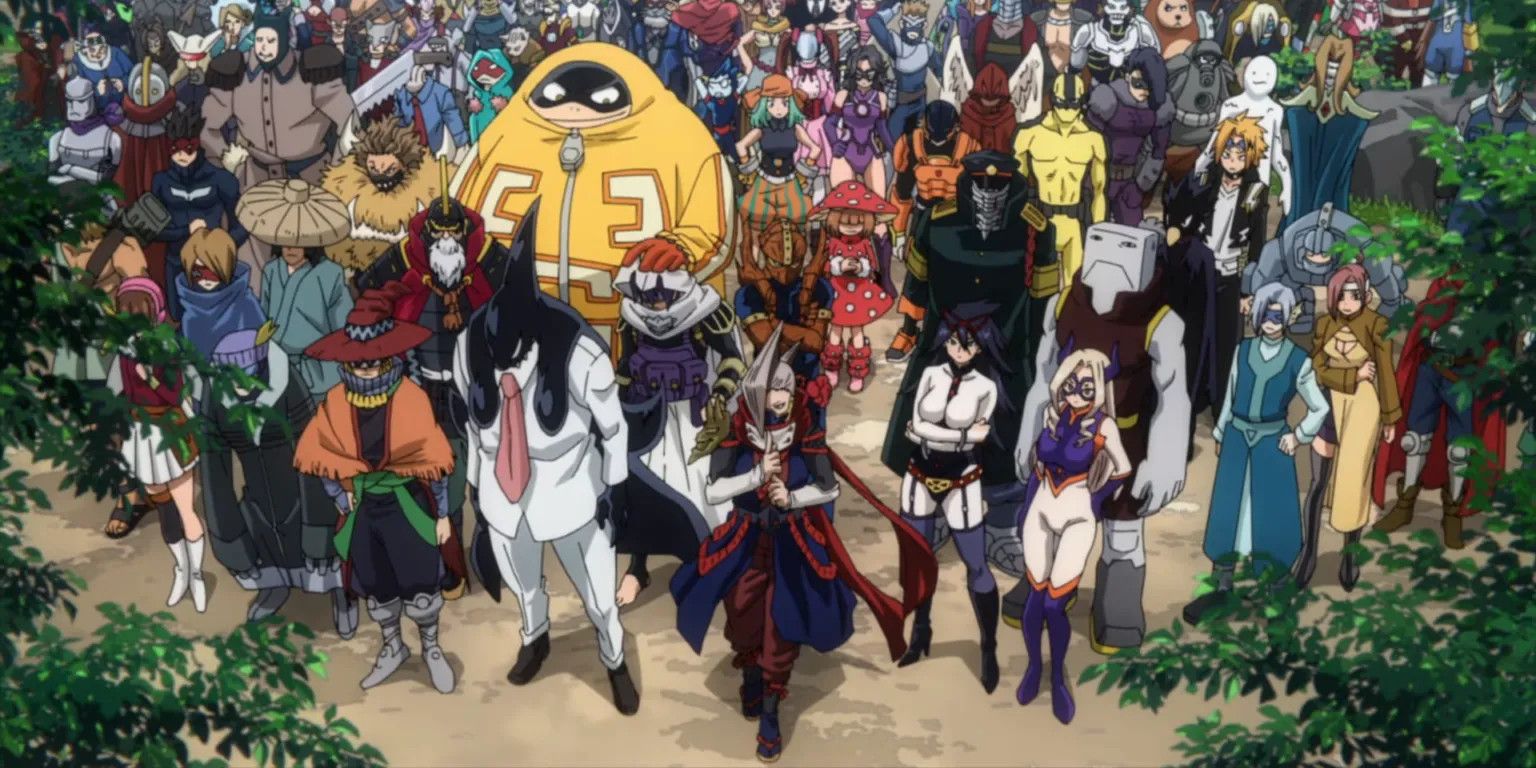The Fall 2022 anime season is loaded with many excellent new and returning titles, from the debut of Chainsaw Man to new seasons of Iruma-kun!, Bleach and My Hero Academia. All of these anime titles have different storylines and pacing, but curiously, both Bleach and My Hero Academia are currently reaching their climaxes with war arcs.
Each of these war arcs will be lengthy, bloody and exciting to watch, and many parallels can be made between them. That said, one of these war arcs has more thematic depth than the other, and one of them also gives the large cast of heroes a better chance to shine during the conflict.
How Bleach & MHA Launched Their Long-Awaited War Arcs in Anime Form
The Thousand-Year Blood War arc and the war against the Paranormal Liberation Front are both highlights of the Fall 2022 anime season, and in each storyline, these titanic battles were inevitable. These two war arcs are the culmination of everything that happened before them, and once the wars are over, their respective worlds will never again be the same. These wars also have thematic overlap, with the villainous organizations both fighting for revenge and seeking to make up for past wrongs. These villainous groups -- the Paranormal Liberation Front and the Wandenreich Quincy empire -- are almost sympathetic that way, but their brutal misdeeds clearly mark them as antagonists who are a threat to peace and justice everywhere.
The Soul Reapers and pro heroes alike brought these wars on themselves by maintaining their positions as society's dominant force. Pro heroes created their own worst enemies when they ostracized and judged certain people because of their Quirks, and those people internalized their suffering to become villains bent on revenge. These villains must still be held accountable for all their crimes and violent deeds, but even so, many of them are fighting this war simply because they can't find any other way to make a society that will accept them.
Meanwhile, the Soul Reapers attacked the Quincy tribe 200 years ago and nearly wiped them all out, all to preserve the vital cycle of souls between the mortal plane and the Soul Society. This sparked a bitter grudge between the two groups, and for survival's sake, the Quincy are launching their final war. The Quincy hope to not just survive but also reshape the world into a deathless state where the Quincy may never again fear death or annihilation. That's a somewhat sympathetic goal, but their methods will wreak havoc on the universe. The Soul Reapers must therefore accept responsibility for creating this enemy and wage one last war to secure peace and stability for all time.
The Thousand-Year Blood War Arc vs. the Villain War: Which Arc Is better?
Even if these two anime war arcs are similar, the war between the pro heroes and Paranormal Liberation Front is ultimately the better arc. Production-wise, My Hero Academia's arc is more timely, as the anime never experienced any delays or hiatuses to disrupt the pacing. Anime fans explored MHA's storyline at a smooth pace, and the dawn of this war feels perfectly timed as a result. That makes it far more exciting, and the hype and momentum are at an all-time high. By contrast, Bleach's anime was canceled in 2012 and didn't return until 2022, and a decade-long delay is sure to ruin the pacing and hype for the Thousand-Year Blood War. After all, this time, only truly dedicated Bleach fans are still around to watch this arc, while everyone else has long since given up and moved on.
In-universe, the heroes vs. villains war also has a bit more depth than its Thousand-Year Blood War counterpart. Both arcs depict a villainous group seeking revenge for past wrongs, but the villains feel more relevant to real-world societal issues than the Quincy. The Soul Reapers vs. Quincy feud is strictly fantasy fiction, while the heroes vs. villains saga is a clear metaphor for plenty of real-world struggles on all levels. Comparisons can be made to the battle of heroes vs. villains in X-Men, and that franchise has clear and deliberate thematic ties to the real world.
Finally, the heroes vs. villains arc will give MHA's main characters a better chance to shine. Both war arcs will give their heroes glow-ups, but an alarming number of Bleach heroes will either get sidelined or fight just one inconsequential battle before main heroes like Ichigo, Uryu, Kisuke and Yoruichi take over. In contrast, My Hero Academia does a better job juggling its many heroes and their Quirks. That anime has an ensemble cast, after all, and that means giving everyone a fair chance to shine, even minor characters like Koji Koda and Neito Monoma. That's what it means to have a truly united hero army fighting for the future of society.



